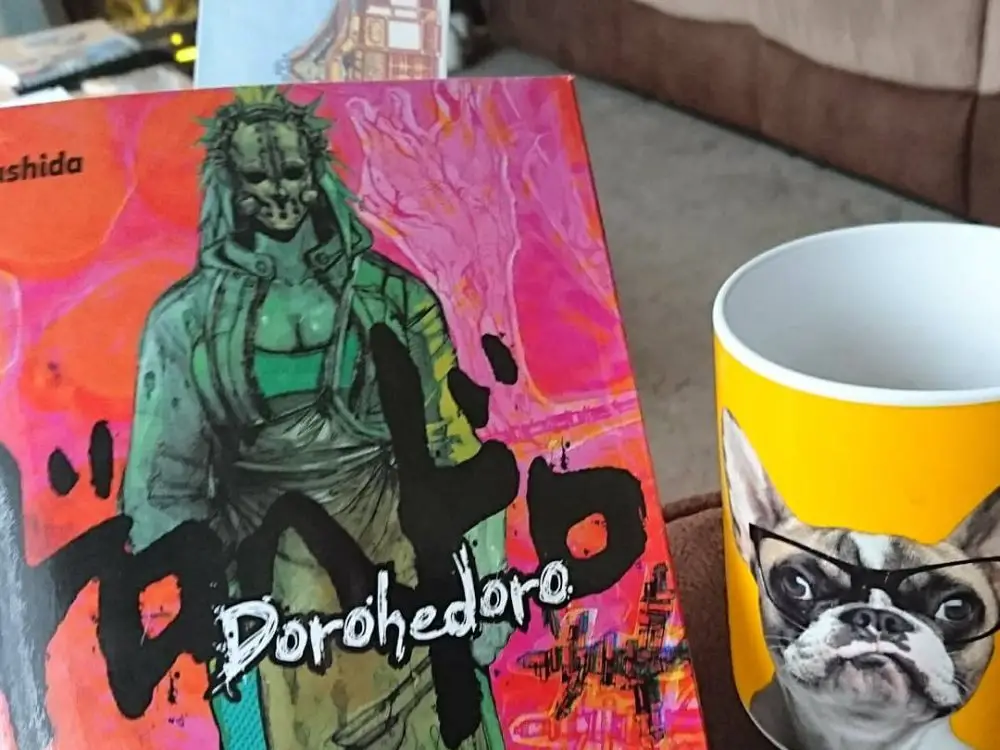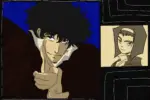Following the recent end of its manga run, “Dorohedoro” will make its anime premiere, January 2020, on the 20th anniversary of the manga’s initial publication date; however, its American debut on Netflix will be delayed, as this company usually likes to release their exclusive anime with an English dub option. The anime may not be available to watch yet, but there is a lot to anticipate.
“Dorohedoro” is author Q Hayashida’s longest running and most popular work so far. Across its 23 volumes, the story builds upon a postapocalyptic world full of masked fiends decked out in chunky sneakers and dozens of unnecessary zippers. Each character’s fashion sense is distinct, and each outfit feels off its in its own abnormal way. The ultra-violent fight scenes and vast cityscapes of “Dorohedoro” profit from Hayashida’s outlandish, sketchy art. The manga’s narrative mixes together with Hayashida’s impressive list of idiosyncrasies to make something truly singular.
The manga is largely set in a decrepit city called The Hole — a place where humans live apart from sorcerers. The protagonist, Caiman, is a human who has been turned into a lizard man with no recollection of his pre-reptile existence. Embarking on a mission that he is unclear on, Caiman puts sorcerers in his mouth so they can be either accepted or rebuked by a mysterious man who appears in Caiman’s throat. A rebuke means sudden death for any sorcerer who might cross Caiman’s path.
Characterizing Caiman as the series’s protagonist may not be wrong exactly, but it betrays the expansiveness and looseness of the series. The plot provides a satisfying and propulsive mystery that is frequently undermined by the boundless creativity of the world of “Dorohedoro.” There’s an almost absent-minded quality to how the environments and small interactions are subtly building the manga’s intricate mythology. “Absent-minded” is the only way I can really swipe at describing how Hayashida masterfully blends her aesthetic with the realities of The Hole, as there are so few moments when the story places any sense of emphasis on clearly communicating the details of the setting to the reader.
“Dorohedoro” may have a rough art style at times, but the narrative rarely ever shows its seams; the manga has the effect of totally introducing you to a living, breathing world. Hayashida’s creation finds the perfect way to let her plot take “Dorohedoro” in directions where she can revel in unorthodox indulgence. For a series with so little creative restraint, “Dorohedoro” never looks to actively impress the reader. The looseness of its pacing avoids the tired build-up until action trajectory that drags down so many manga. The world and story of “Dorohedoro” is always moving, but the characters often exist and move away from the most pressing goings-on. Like the author, the characters do what they want. It’s probably best to think about “Dorohedoro” this way: It’s just an extremely intense hang-out manga.
The distinct choices in the adaptation’s trailer and staff list provides a lot to theorize on. The series will be directed by Hayashi Yuuichirou, who recently worked on another Netflix exclusive anime called “Kakegurui.” His work in “Kakegurui” shined most in the ways he prioritized the establishment of his characters’ distinct personalities. Yuuichirou makes his characters come alive, making the cinematography feel like an extension of a character’s quirky nature. When multiple personalities fill a room, he places extreme focus on a personality tic or outburst. Although “Kakegurui” and “Dorohedoro” are incredibly different, they are both filled to the brim with intense and memorable figures that Yuuichirou can work with.
Me realizing I could make Dorohedoro stuff in the next year and it might even be commercially viable for cons pic.twitter.com/MaAyCZuZ1b
— Modjeska (@modjeskah) December 12, 2019
The most impressive resume on the “Dorohedoro” staff list surely belongs to the background artist, Shinji Kimura. His past works — “Akira,” “Space Adventure Cobra,” “Urusei Yatsura 2: Beautiful Dreamer” — are some of the most essential anime features ever, and his backgrounds are the most striking part of the brief trailer. The backgrounds respect the aesthetic and intent of Hayashida’s artwork; however, the grime and shadows of The Hole are given a polished grandeur that makes the world feel alive.
In contrast to many other anime, “Dorohedoro” is embracing the work of computer-generated images. CGI in anime is beyond taboo. Although series like “Land of the Lustrous” have changed how anime fans perceive CGI in anime, there’s still a massive stigma surrounding the cheap clunkiness associated with CGI. Yuki Nomoto, the 3D director responsible for the CG and 3D in “Inuyashiki” and “Yuri!!! on Ice,” showcases a large number of impressively stylized CG models in the trailer. Nomoto’s work for her studio in the past has been used to facilitate scenes requiring intricate movement and actions, so she should prove to be a perfect fit for “Dorohedoro” and its numerous fast-paced fight scenes.
The music of “Dorohedoro” will be done by [K]NoW_NAME, and the two tracks in the trailer suggests the music will suit the series well. The first track is an initially a piercing, noisy industrial track, and its placement over scenes of Kimura’s backgrounds builds up the grimness of The Hole’s dilapidated structures. The eccentric punk sounds of the trailer’s second track encompasses the series’s many, many weird characters and plot points. The aloof characterizations, peculiar outfits and unwholesome foci all give off a punk vibe, so it’s easy to see how the track will work alongside the “Dorohedoro” anime.
The opening for Dorohedoro is by (K)NoW_NAME and will be called “Welcome to Chaos”. The single will be released February 19th 2020. https://t.co/AqcrPoT85v
— Weekly Shougakukan Edition (@Wsstalkback) December 11, 2019
Long-awaited adaptations are often met with equal amounts of dread and anticipation, as they can often mishandle the source material; however, I think there’s very little to worry about with “Dorohedoro.” The staff is comprised of very talented artists, and the animation studio, MAPPA, is responsible for a number of impressive manga adaptations: “Dororo,” “Kids on the Slope” and “Hajime No Ippo.” The trailer presents a mostly convincing and impressive presentation of The Hole and its denizens, and its “Mad Max” with magic world should be enough to draw in viewers unaware of the anime’s manga origins. Netflix also has a pretty good reputation for selecting accomplished anime to add to its small roster of anime originals. If the long string of promising details manages to fail, there’s always one fool-proof method for getting over a bad adaptation: turning back to the manga.
















